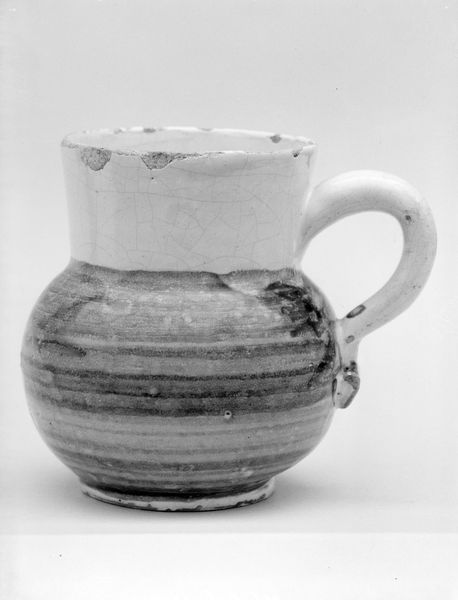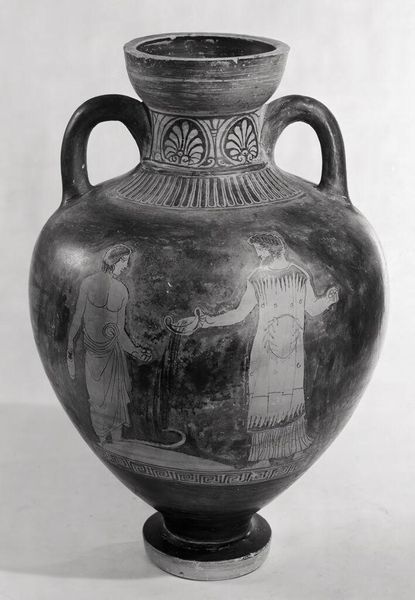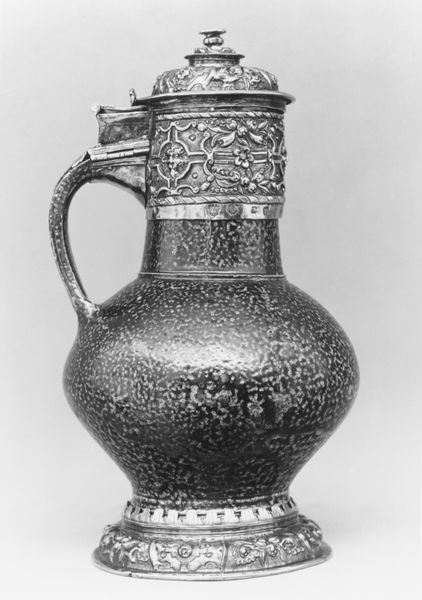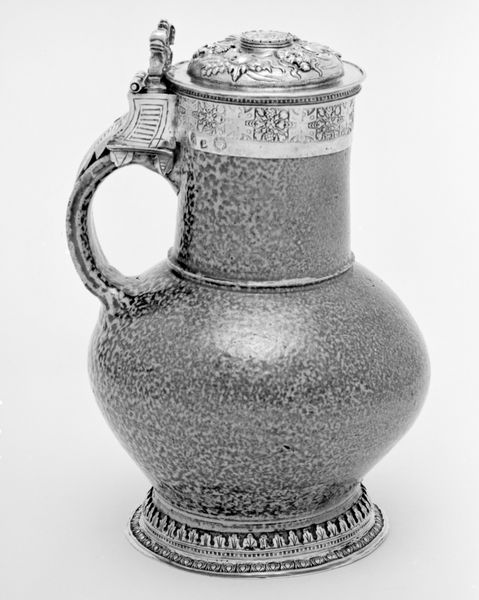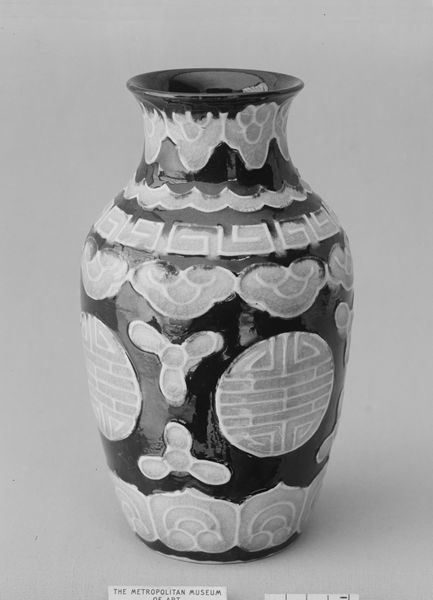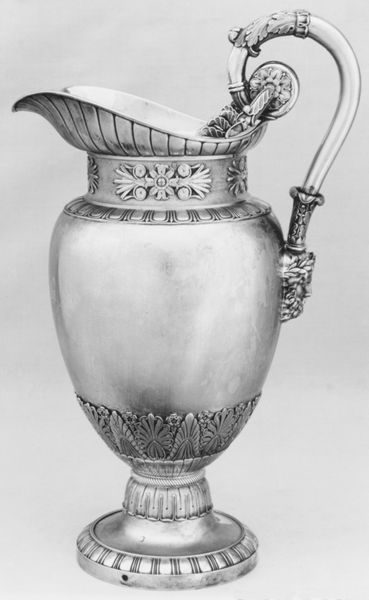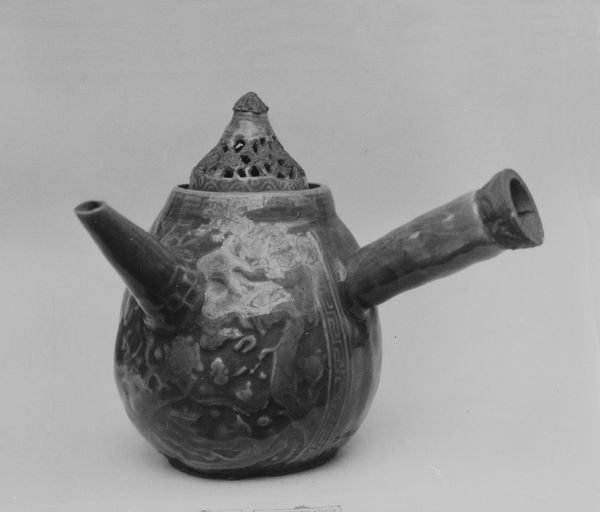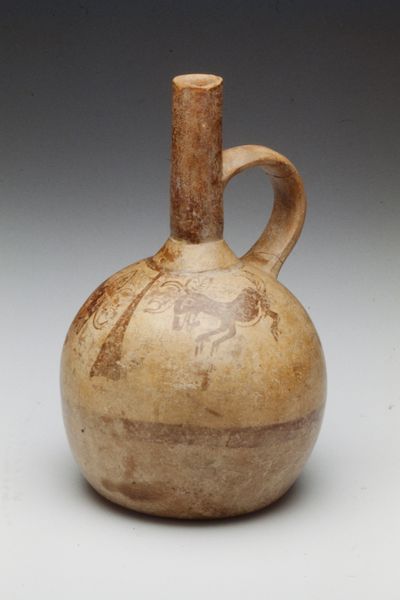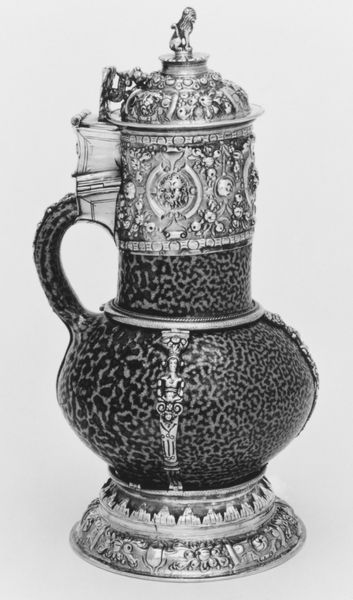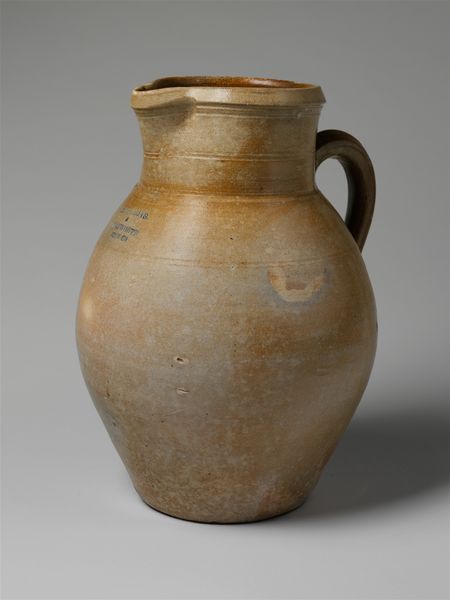
ceramic, earthenware
#
baroque
#
ceramic
#
earthenware
#
stoneware
#
wash background
#
england
#
macro photography
Dimensions: H. 10 1/8 in. (25.7 cm)
Copyright: Public Domain
Curator: Standing before us is an English jug, crafted by the Lambeth Factories sometime between 1644 and 1647. The piece, made from earthenware, showcases the ceramic practices prevalent during the Baroque era. Editor: It has such a gentle presence, doesn't it? A sort of quiet domesticity. The bulbous form, that subtle crackling in the glaze... it feels incredibly tactile. Curator: Indeed. The form speaks to its function, though the inscription, "RMS", elevates it beyond mere utility. It prompts considerations about who RMS might have been, their social standing, and the jug’s intended purpose within their household. Editor: "RMS" might indicate familial pride. Consider the socio-political turmoil of 17th-century England—the Civil War brewing. Perhaps displaying initials like this became a coded declaration of allegiance, an embrace of established identities within increasingly unstable landscapes. Curator: It's a compelling proposition to examine this stoneware jug as an object imbued with the quiet anxieties of its time. Earthenware, as a material, situates it within a wider conversation regarding England’s developing economic infrastructure during this period. Editor: We can’t disregard England’s burgeoning colonial entanglements either. Objects such as this, while appearing merely decorative, participated in global trade networks built upon the exploitation of people and resources. How do these consumer goods, entering homes across the country, become active agents in normalizing and embedding these injustices? Curator: A potent line of thought, acknowledging how everyday objects participate in much larger cultural, political, and financial patterns. It’s a vital counterpoint, drawing connections between this intimate domestic piece and England’s growing empire. Editor: Right, this seemingly humble jug carries with it centuries of unspoken histories, and its display within a space such as the Met positions us, too, in that continuing story. Curator: Absolutely, its presence here provokes inquiries into how such items circulate within, and subsequently inform, historical narratives across institutional, as well as cultural, frameworks. Editor: So, as we gaze at this seemingly simple jug, let's consider it more deeply – a silent witness and participant in the complexities of its time.
Comments
No comments
Be the first to comment and join the conversation on the ultimate creative platform.
